ASU Law team helps lay legal groundwork for futuristic master-planned community
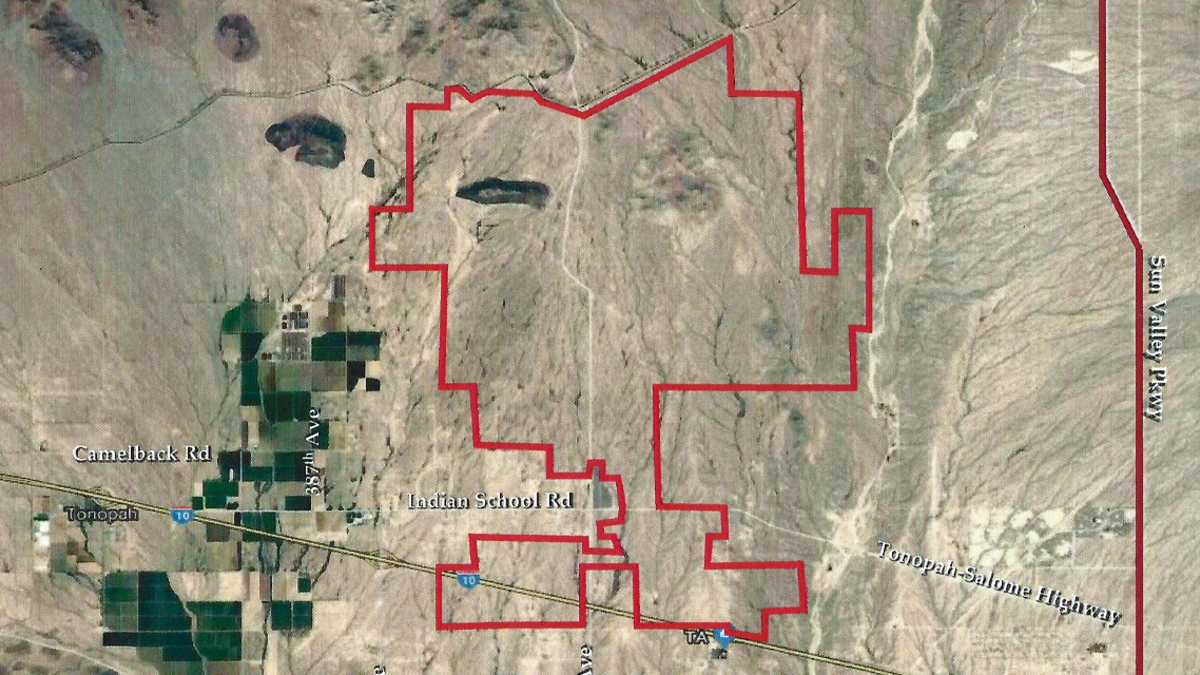
A team of ASU Law students analyzed options for Belmont, a 24,800-acre master-planned community on unincorporated land west of Phoenix, as outlined in the map here.
Take the dream of building a reimagined city from scratch and combine it with the innovation and expertise of Arizona State University’s faculty and students, and magic ensues.
When Belmont, a new community in the West Valley, was launched, developers approached ASU and its University City Exchange office to begin a long-term partnership with student courses and research efforts geared to rethink every aspect of forming a city. And starting from the ground up means legal and operational terms need to be defined. That’s where the Sandra Day O’Connor College of Law at ASU comes in.
University City Exchange Executive Director Wellington “Duke” Reiter said initial plans began to create Belmont-centric classes and research initiatives involving hundreds of ASU students over several years to imagine the future of transportation, supply chains, energy, buildings and various technologies. To start the efforts, ASU Law faculty and students were asked to propose a set of ground rules, policies and governance structures allowing for resource optimization and design possibilities to facilitate a truly forward-thinking vision.
A team of four third-year ASU Law students was formed and spent much of the past year analyzing options for the 24,800-acre master-planned community on unincorporated land west of Phoenix.
“These are the types of innovative, unique, experiential learning opportunities we provide that prepare our students for the real-world challenges of legal work,” said ASU Law Dean Douglas Sylvester. “The students provided a thoughtful, in-depth analysis and ultimately helped draft legislation that could have a resounding impact on Greater Phoenix’s future. And Arizona.”
Diana Bowman, ASU Law’s associate dean for international engagement and co-director for the Center for Smart Cities and Regions, oversaw the analysis. She says unlike Arizona’s other master-planned communities, this site, at the intersection of Interstate 10 and future Interstate 11, presents unique opportunities for emerging technologies, especially regarding transportation.
“A core component of the development is an opportunity for a logistics hub that will incorporate new and emerging technologies including, for example, autonomous trucking, and others that we cannot even envisage today,” she said. “It’s the perfect location. But given that this community could possibly have 70,000 residential units, the investors wanted to take time to think about some of these questions in a smart, academic way. And we identified very early on that the governance framework to allow for the logistics hub and residential zoning may have to be reconsidered to allow for the most flexibility.”
An ambitious assignment
University City Exchange Director Melissa McCann underscored the Belmont project’s potential, citing I-11’s integral role in the Mexico-to-Canada transportation corridor, driving future state economics as a visionary smart highway with integrated digital technology. She said the project provides an opportunity to leverage the state’s enterprising technology policies on tech and autonomous vehicles to continue to build on the Silicon Desert. It also serves as a prototype for Arizona’s greenfield or large-scale land planning, providing an opportunity to balance the future of a created natural environment that is resilient.
The process of identifying various governance options for the high-stakes project and providing an in-depth analysis began in earnest last September for the four ASU Law students: Keaton Brown, Walter Johnson, Garrett Nebeker and Dallin Robinson. The project would run the duration of their final ASU Law year.
“We set out to answer two main questions, one for each semester,” Robinson said in a recent video conference with project stakeholders. “First, what is the optimal governance model for Belmont? And second, what specific provisions should that optimal governance include?”
They examined several governing possibilities: a traditional master-planned community; a public-private hybrid plan involving the county; annexation from an existing municipality; incorporating as its own municipality; or forming a special district.
Each option was weighed against each other to determine its flexibility with internal governance, neighboring jurisdiction coordination, financial independence, viability to host and attract industry, emerging technology receptiveness, and durability to hold up over several decades.
The team’s analysis found that forming a special district was the model that made the most sense and offered the necessary flexibility. Such districts are typically established to provide a specific service, such as water, sewage or law enforcement, and they are government bodies, like cities or towns, although structured quite differently.
“We conducted research by looking at case studies to determine what governance models existed throughout the U.S. and the world,” Brown said. “We then examined each of those governance models and compared them to Belmont’s needs.”
The students studied prominent uses of other states’ special districts, including the Woodlands community outside of Houston and the Research Triangle Park in North Carolina. After analyzing successful elements and determining what would be needed, Nebeker said the team concluded that Arizona’s current statutory framework was incompatible with the Belmont project’s innovative and long-term needs.
That meant adapting Belmont’s plans to better fit within Arizona’s current statutes, or trying to adapt Arizona’s statutes to better fit the vision for the community.
The goal from the start was to do something that had never been accomplished before — for both the state of Arizona and the western U.S. — while helping to facilitate that vision. So after receiving feedback from the clients on their preferred course of action, the task of drafting legislation began.
“One of the more important things I learned was the value and process of trying things that haven't been done before,” Johnson said. “The recommendations we developed drew on lessons we learned from elsewhere in the country, but were unique to our location, to the clients’ needs, and to the scope of the project imagined.”
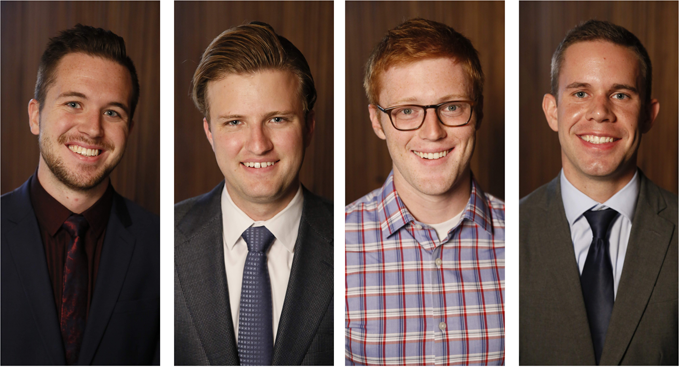
The process of identifying various governance options for the high-stakes project and providing an in-depth analysis began in earnest last September for the four ASU Law students, from left to right: Dallin Robinson, Garrett Nebeker, Walter Johnson and Keaton Brown. The project would run the duration of their final ASU Law year.
The idea was to be mindful of the greater good for the immediate future, and to try to structure the legislation to be compatible with the uncertainties that lie further ahead. Key provisions included protecting Belmont’s long-term vision from external political forces, accounting for financial incentives needed to attract business, and, perhaps most importantly, defining infrastructure in a way that provides flexibility for decades.
“We knew technology would be changing,” Brown said. “So we wanted to make sure we maintained maximum flexibility.”
As Bowman said in the conference call, the students were focused on practical applications, and the goal was to get results — to draft legislation that would ultimately be approved by the Arizona legislature.
“What we are presenting is something that has passed the litmus test with our various partners on this project,” she said. “It’s not designed to just be a ‘pie-in-the-sky’ theoretical exercise. We have been discussing this with the Greater Phoenix Economic Council, the Arizona Commerce Authority, elected officials and political appointees to ensure that how we’ve been shaping this legislation is something that would be acceptable and most likely get the governor’s signoff.”
She added, “It’s been wonderful to see four students who have worked so hard over eight or nine months produce something that is going to drive results for Arizona. I am exceedingly impressed by their presentation and work across the year.”
Real learning, real impact
Robinson said it was one of his best experiences at ASU Law, and he’s happy to know the school is working to provide similar opportunities for other students.
“I enjoyed the work so much more than I could have imagined when I signed up for it, and that’s because I never expected that I, as a law student, would be consulted on questions of this scope and scale,” he said. “I’m a pragmatist, so knowing the potential real-world impact of my research made the experience significantly more meaningful to me than a purely academia-focused project would.”
For Johnson, an important part of the experience was the opportunity to work with a variety of different professionals.
“Our meetings had practicing lawyers, members of the client investor team, and law school faculty and staff all present — which created a dynamic environment where we could bounce ideas off of others with different perspectives and expertise,” he said. “Our discussions were always rich, and it led to really robust research and recommendations.”
Grady Gammage Jr., an ASU Law adjunct professor and principal of Gammage & Burnham, who represents the investment team, applauded the students’ work.
“This was a really great experience,” he said. “There aren’t enough opportunities in law school for students to think creatively about the role of lawyers in designing systems to help society function. The students were phenomenal — smart, fun, engaged. We got really useful information from them.”
Brown said working on Belmont was a one-of-a-kind experience, and he welcomed the trust and responsibility that he and the other students were given. He added that the project taught him things that simply cannot be learned in a classroom — skills and knowledge that he expects will be invaluable in his legal career.
“What was so special about Belmont is that it is a real project, with a real client, with real legal questions,” he said. “Unlike some externships where the students aid attorneys in solving a legal issue, the Belmont’s partners expected us, as the students, to solve the legal issues and lead the way. We definitely had lots of support from so many people, but it was up to our student team to provide the legal solutions.”
Robinson enjoyed working with the array of people and organizations involved, and said the project gave him firsthand knowledge of what real-world leadership looks like.
“It taught me that bringing about meaningful change requires being able to unite many different stakeholders around a common vision,” he said. “In doing so, it’s easy to lose the forest for the trees, but it’s essential to hold on to that bigger perspective so you can see how everything else fits within it.”
Johnson says he hasn’t decided if he wants to pursue a career in academia or policy, but either way, the project underscored how vital legal matters are to large-scale visions.
“This experience has given me great insight into how long-term projects like Belmont actually come about — both in terms of what kinds of actors and considerations are involved and in how central the law is to planning and carrying out these projects.”
More Law, journalism and politics
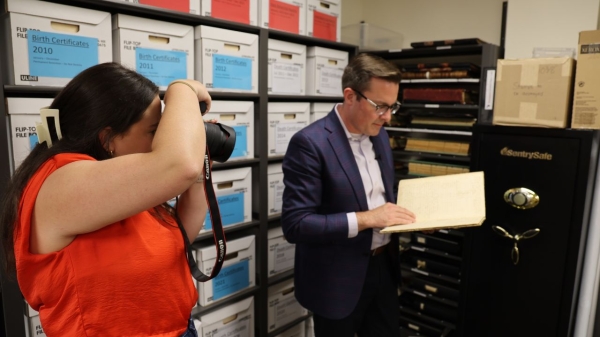
ASU's Carnegie-Knight News21 project examines the state of American democracy
In the latest project of Carnegie-Knight News21, a national reporting initiative and fellowship headquartered at Arizona State…
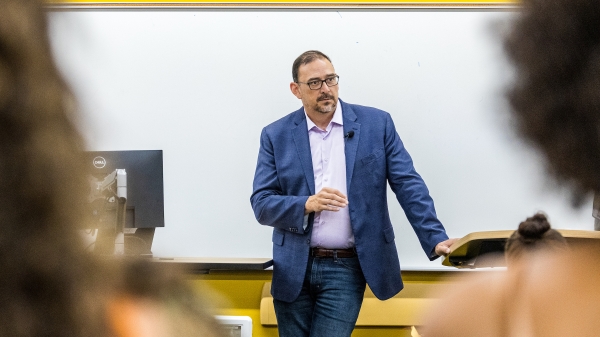
Arizona secretary of state encourages students to vote
Arizona Secretary of State Adrian Fontes looked right and left, taking in the more than 100 students who gathered to hear him…
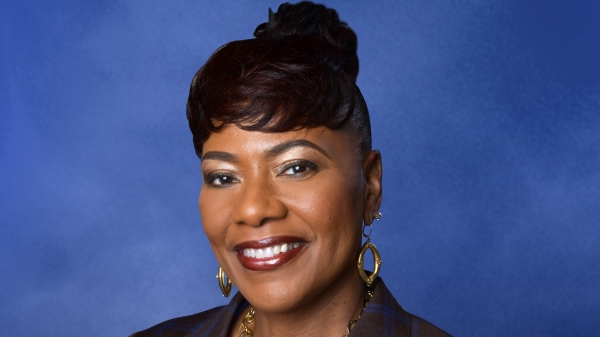
Peace advocate Bernice A. King to speak at ASU in October
Bernice A. King is committed to creating a more peaceful, just and humane world through nonviolent social change.“We cannot…